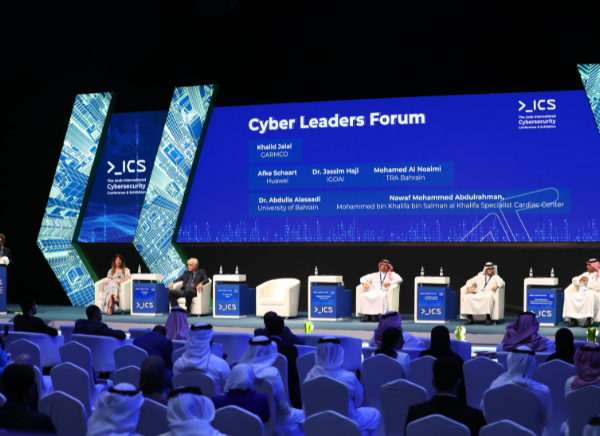
The Arab International Cybersecurity Conference and Exhibition in Bahrain, co-hosted by the National Cyber Security Centre (NCSC) and held under the patronage of Bahrain Crown Prince HRH Prince Salman bin Hamad Al Khalifa, attracted the highest level of engagement in the region, with participation from government, industry, and business verticals including BFSI, oil & gas, energy, utilities, IT & telecom, manufacturing, education, and more.
Afke Schaart, Huawei’s Chief Global Impact Officer and Senior Vice President of Global Government Affairs, delivered a keynote address on cybersecurity development, collaboration, and unified standards. Ms. Schaart stated that well-established standards and regulations could address both product vulnerabilities and operational flaws. She praised the OIC-CERT 5G Security Working Group, whose 5G Security Framework offers a systematic, defense-in-depth approach that can be used to accelerate ICT development.
The conference brought together a large number of industry professors and regulators to discuss wildly collaborative efforts to improve cybersecurity and privacy capabilities. The NESAS/SCAS framework, developed jointly by the GSMA and 3GPP, demonstrates excellence in dealing with cyber threats. It is based on industry experience and provides a clear certification framework for product security evaluations. Furthermore, the GSMA has published a 5G Cybersecurity Knowledge Base with contributions from global operators and suppliers. The Knowledge Base provides guidance on addressing 5G security risks in stages ranging from network planning and construction to maintenance, optimization, and operations. These fact-based approaches are widely supported by industry participants; therefore, government regulators should consider adopting and promoting them as factual standards.
In addition, a panel titled “Build cyber resilience upon Standards and Collaboration brought valuable thoughts from different fields. Participants included Ms. Schaart; Mr. Mohammed Al Noaimi Director of Technology and Network Security, TRA Bahrain, Dr. Jassim Haji, President of AI International; Khalid Jalal, Senior Group ICT Manager, GARMCO, and Nawaf M. Abdulrahman, CIO; Mohammed bin Khalifa bin Salman Al Khalifa Cardiac Centre, Dr. Abdulla Alasaadi, Assistant professor at the University of Bahrain;
Afke Schaart said, “Different stakeholders can collaborate to explore resilience models and solutions based on experience-informed big data analytics. Developing resilience solutions based on standards and rules is critical as we believe that both product vulnerabilities and operational lapses can be best addressed through well-established standards and regulations.”
Dr. Abdulla Alasaadi said, “Cyber resilience accepts that attack might happen no matter how well prepared your defenses are. It takes you beyond cybersecurity, stressing the importance of being prepared for an attack so you can respond and recover with minimal impact to your business.”
Khalid Jalal said, “There is a cyber-attack somewhere in the world every 39th second and every day, 2200 attackers are hacking 800,000 people. If this does not ring an alarm, then nothing will. Although technology and technologists are doing their best, it’s not enough unless cyber security resilience plans become integral to corporate strategic plans. Global unified standards and regulations can help industries operate safely in a prosperous business ecosystem and nurture a thriving digital economy for years to come.”
Dr. Jassim Haji said, “AI-based tools for cybersecurity have emerged to help information security teams reduce breach risk and improve their security posture efficiently and effectively. AI and ML have become critical technologies in information security, able to quickly analyze millions of events and identify many different types of threats, from malware exploiting zero-day vulnerabilities to identifying risky behavior that might lead to a phishing attack or download of malicious code.”
Nawaf M. Abdulrahman said, “In the past, having a cybersecurity strategy that stopped the cybercriminals at the gate by fortifying the perimeter provided adequate protection. However, the acceleration of digital transformation in recent years has added hundreds or even thousands of gates to defend, forcing organizations to adopt an effective cyber-resilience strategy that can withstand both known and unknown crises, threats, adversaries, and other cybersecurity challenges.
“This panel discussion allows organizations to understand better how to build cyber-resilience upon existing standards and collaboration and sheds light on measuring and solving cybersecurity concerns and threats related to the latest trends such as IoT and Industrial IoT.” he added.
